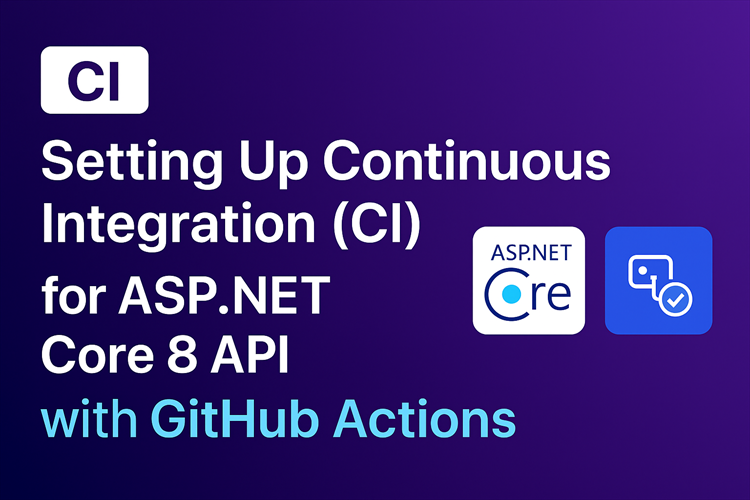
Setting Up Continuous Integration (CI) for ASP.NET Core 8 API with GitHub Actions
Continuous Integration (CI) is a key practice in modern software development. It ensures that every change made to the codebase is automatically built and tested, catching issues early before they reach production. In this article, I’ll walk you through setting up a CI workflow for an ASP.NET Core 8 API using GitHub Actions.
Why CI?
-
Automatically builds your project on every commit.
-
Ensures code compiles and dependencies are correctly restored.
-
Reduces integration issues for teams.
-
Prepares the groundwork for Continuous Deployment (CD).
GitHub Actions Workflow for CI
Here’s the workflow I created for my SimpleAPI project. The workflow automatically triggers on pushes and pull requests to the main branch.
Step-by-Step Explanation
1. Trigger the Workflow
-
The workflow runs whenever code is pushed to
mainor a pull request targetingmainis opened. -
This ensures that all changes are verified before merging into the main branch.
2. Configure the Job
-
The job is named
buildand runs on the latest Ubuntu runner provided by GitHub. -
The
SOLUTION_PATHenvironment variable points to the.slnfile for easy reuse in commands.
3. Checkout the Code
-
Uses GitHub's official checkout action to clone your repository on the runner.
-
Essential for the runner to access your code.
4. Setup .NET SDK
-
Installs .NET 8 SDK on the runner.
-
Ensures the workflow uses the same .NET version as your local development environment.
5. Cache NuGet Packages
-
Caches NuGet packages to speed up subsequent builds.
-
The cache key changes only when
.csprojfiles change, ensuring updated dependencies are restored.
6. Restore Dependencies
-
Runs
dotnet restoreto download and install all dependencies defined in your solution.
7. Build the Solution
-
Builds the project in Release mode.
-
Skips restore because dependencies are already restored in the previous step.
Conclusion
This GitHub Actions workflow sets up a robust CI pipeline for your ASP.NET Core 8 API:
-
Automatically builds on every push or pull request to
main. -
Restores dependencies efficiently using caching.
-
Builds the solution in Release mode to ensure production readiness.
Download full working code from GitHub
The next step is Continuous Deployment (CD), where we can deploy the API automatically to a hosting platform like Azure or Render.
Thanks, for reading the blog, I hope it helps you. Please share this link on your social media accounts so that others can read our valuable content. Share your queries with our expert team and get Free Expert Advice for Your Business today.
